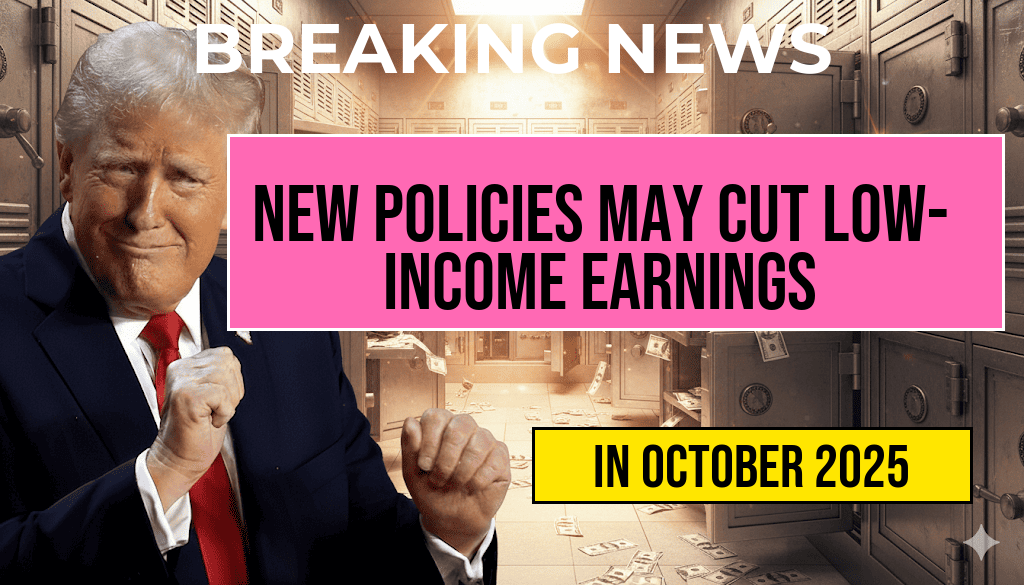New policies proposed by lawmakers are poised to impact the financial stability of low-income households across the United States, potentially reducing their annual income by an alarming $1,650. These changes, primarily aimed at budgetary reform and tax restructuring, are garnering significant attention from economic analysts and social advocacy groups. Critics argue that such measures could exacerbate existing inequalities and push vulnerable families further into poverty. As the debate intensifies, stakeholders are voicing concerns about the long-term implications for the nation’s poorest citizens.
Understanding the Proposed Changes
The new policies under consideration include cuts to various social welfare programs, adjustments to tax credits, and modifications to unemployment benefits. Each of these changes is designed to streamline government spending but may inadvertently target the very households that most depend on these supports.
Key Policy Changes
- Reduction of Food Assistance Programs: Proposed cuts to the Supplemental Nutrition Assistance Program (SNAP) could leave millions without adequate food support.
- Changes to Earned Income Tax Credit (EITC): Adjustments to eligibility criteria may disqualify some low-income families from receiving crucial tax credits.
- Unemployment Benefits Restructuring: Tighter restrictions on unemployment benefits could impact jobless individuals, especially in economically depressed areas.
The Economic Impact
According to a report from the Forbes, the anticipated income reduction of $1,650 could have serious ramifications for low-income families. Many households rely on these funds for essential expenses such as housing, healthcare, and education. The ripple effect could lead to increased reliance on charitable organizations and public assistance, ultimately straining community resources.
Statistics on Poverty Levels
| Category | Percentage | Number of Individuals |
|---|---|---|
| Overall Poverty Rate | 11.4% | 37.9 million |
| Children in Poverty | 16.8% | 12.1 million |
| Working Poor | 3.5% | 11.0 million |
Voices of Concern
Advocacy groups such as the American Civil Liberties Union (ACLU) and the Center on Budget and Policy Priorities are raising alarms about the potential fallout from these policy changes. They argue that reducing income for the poorest households could lead to increased rates of homelessness and food insecurity. “These policies threaten to dismantle the safety net that so many families depend on,” said a representative from the ACLU.
Community Reactions
Community leaders are mobilizing to address these changes, advocating for a more equitable approach to budgetary reform that prioritizes the needs of the most vulnerable. Local organizations are hosting town hall meetings to inform residents about the implications of the proposed policies and to encourage public participation in the policymaking process.
Looking Ahead
The debate surrounding these proposed policies underscores a critical crossroads for American society. As lawmakers consider budgetary reforms, the impact on low-income households must be carefully weighed against fiscal responsibility. The potential reduction of $1,650 in annual income for the poorest families could exacerbate existing societal challenges and undermine efforts to create a more inclusive economy.
As discussions continue, stakeholders urge the public to stay informed and engaged. The decisions made in the coming weeks could shape the financial landscape for millions of Americans, highlighting the need for policies that truly support the most disadvantaged in society.
Frequently Asked Questions
What are the new policies being implemented?
The new policies are aimed at addressing budget deficits but may adversely affect the income of the poorest households.
How will these policies impact the poorest households?
The policies are projected to reduce the income of the poorest households by approximately $1,650, which could significantly worsen their financial situations.
Who will be most affected by these income reductions?
The lowest-income families will be the most affected, particularly those dependent on government assistance and support programs.
What can households do to mitigate the effects of these policies?
Households can seek out local resources such as food banks, community assistance programs, and financial counseling to help manage the impending income reductions.
Are there any advocacy efforts against these policies?
Yes, various advocacy groups are mobilizing to challenge the policies and protect the income of the most vulnerable populations through public campaigns and legislative efforts.

Leave a Reply